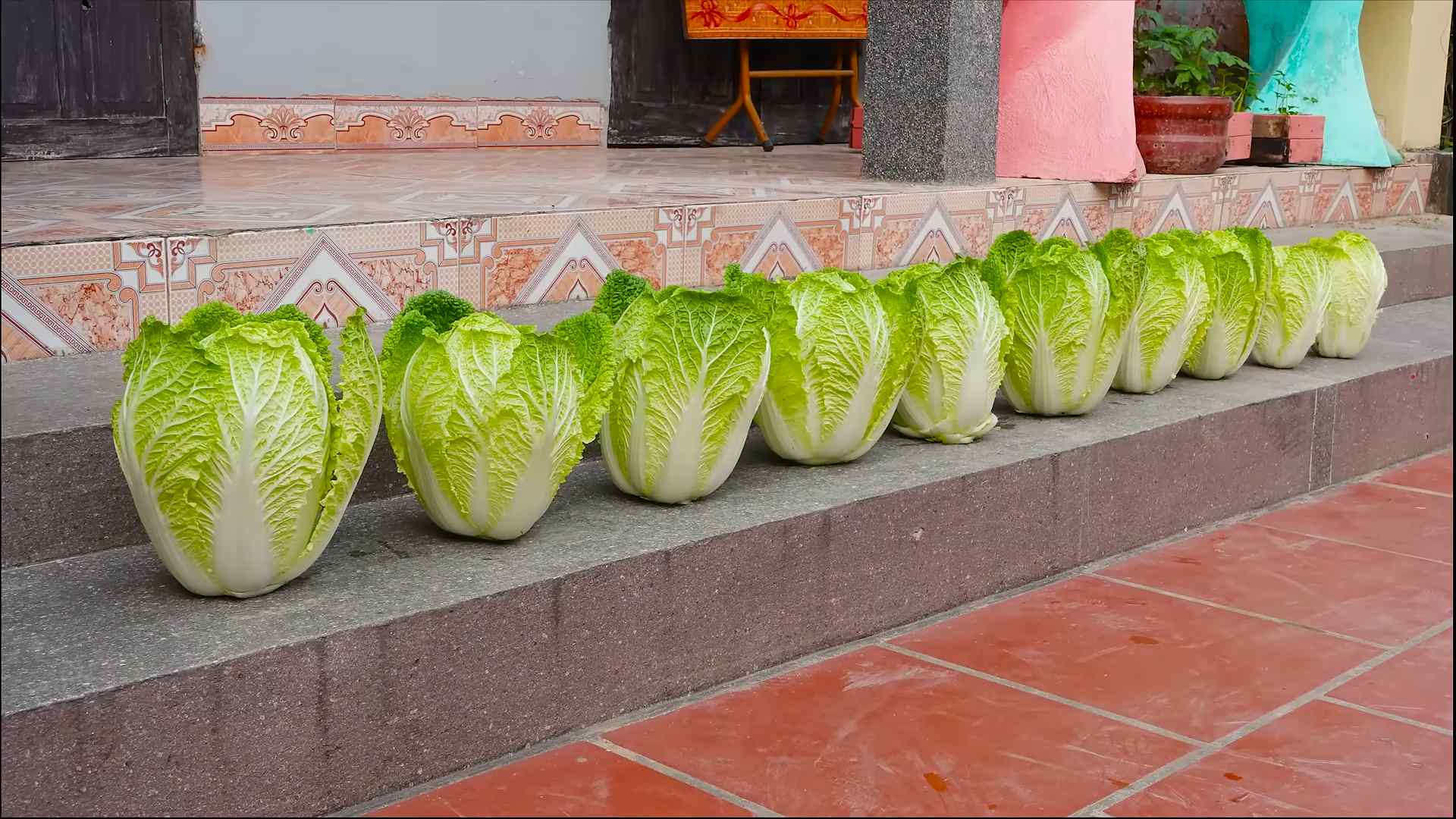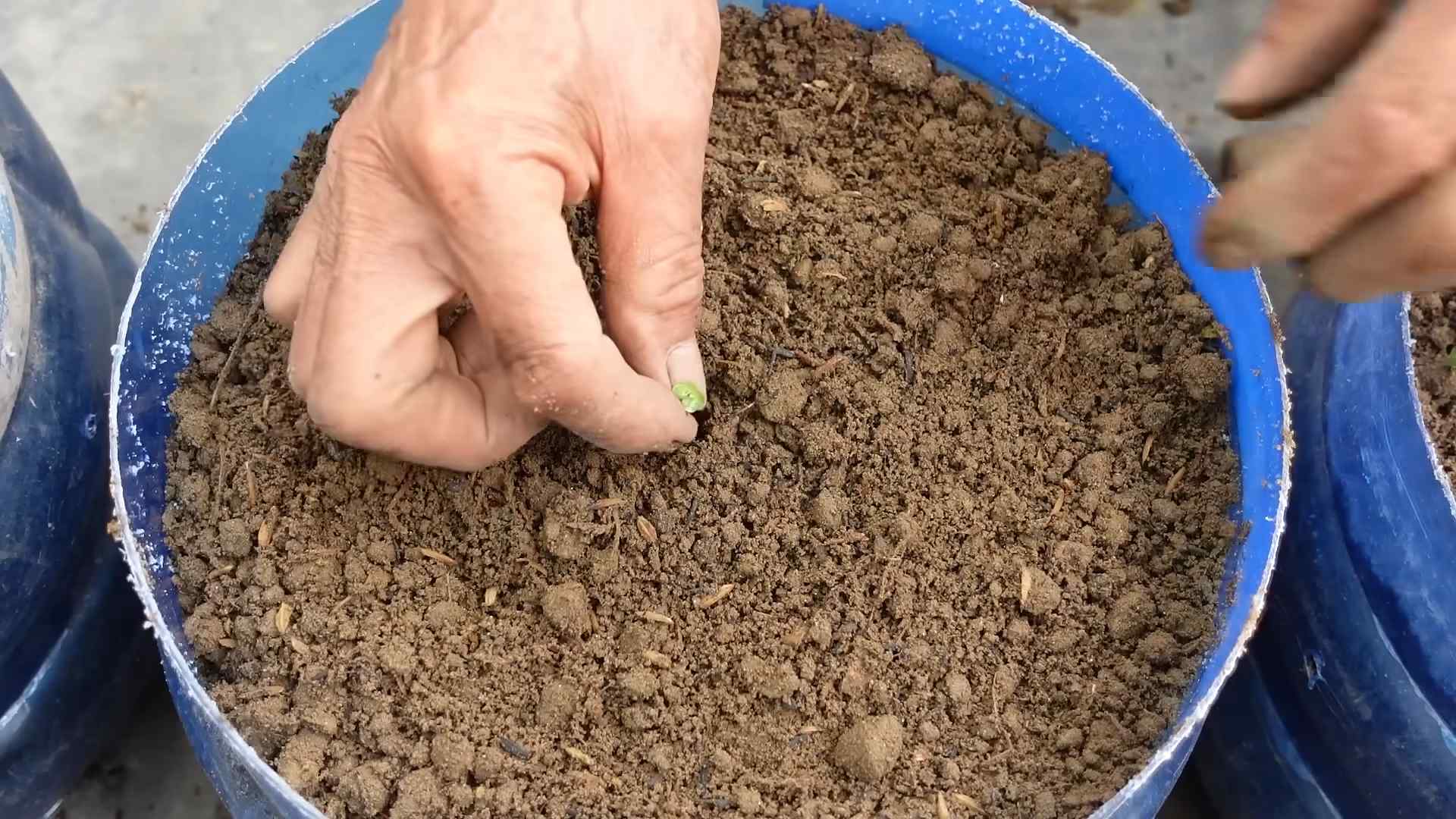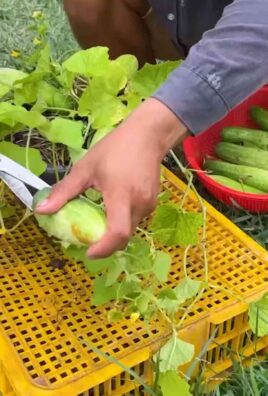Growing Napa Cabbage in a Small Space might seem like a challenge, but trust me, it’s totally achievable! Have you ever dreamed of harvesting your own crisp, delicious Napa cabbage right from your balcony or tiny backyard? Well, get ready to turn that dream into reality with these simple DIY tricks and hacks. For centuries, cabbage has been a staple in diets across the globe, with Napa cabbage holding a special place in Asian cuisine, symbolizing prosperity and good fortune.
But let’s face it, not everyone has acres of land to dedicate to a sprawling vegetable garden. That’s where these clever solutions come in! I’m going to show you how to maximize your limited space and enjoy the satisfaction of growing your own fresh produce. Imagine adding vibrant, homegrown Napa cabbage to your stir-fries, salads, and slaws.
This DIY guide is packed with practical tips, from choosing the right container size to optimizing sunlight exposure and preventing common pests. You’ll learn how to select the best Napa cabbage varieties for compact growth and discover innovative techniques for vertical gardening. So, if you’re ready to embrace the joy of growing Napa Cabbage in a Small Space, let’s dive in and unlock the secrets to a bountiful harvest, no matter how limited your gardening area may be!

Growing Napa Cabbage in a Small Space: A DIY Guide
Hey there, fellow gardeners! So, you’re dreaming of fresh, crisp Napa cabbage but are short on space? Don’t worry, I’ve got you covered! Growing Napa cabbage in a small space is totally achievable with a few clever tricks and techniques. I’m going to walk you through everything you need to know, from choosing the right container to harvesting your delicious homegrown cabbage. Let’s get started!
Choosing the Right Container and Soil
First things first, we need to talk about where your Napa cabbage is going to live. Container size and soil quality are crucial for success, especially when space is limited.
* Container Size: Napa cabbage needs room to grow, so don’t skimp on the container size. I recommend a container that’s at least 12 inches deep and 12 inches in diameter. A 5-gallon bucket or a large grow bag works perfectly. Remember, bigger is generally better!
* Container Material: Plastic, terracotta, or fabric grow bags are all good options. Terracotta pots are beautiful, but they dry out faster, so you’ll need to water more frequently. Grow bags are great for drainage and aeration, which Napa cabbage loves.
* Drainage: This is non-negotiable! Make sure your container has drainage holes. Napa cabbage hates sitting in soggy soil. If your container doesn’t have enough holes, drill a few more.
* Soil Mix: Forget garden soil! It’s too heavy and compacts easily in containers. Instead, use a high-quality potting mix. I like to make my own mix using equal parts:
* Compost: Provides nutrients and improves drainage.
* Peat moss or coco coir: Retains moisture.
* Perlite or vermiculite: Improves drainage and aeration.
Planting Your Napa Cabbage
Now that we’ve got our container and soil sorted, it’s time to get planting! You can start Napa cabbage from seeds or transplants. I personally prefer transplants because they give you a head start, but seeds are a more economical option.
* Starting from Seeds:
1. Sow Seeds Indoors (Optional): You can start seeds indoors about 4-6 weeks before the last expected frost. Sow seeds about ¼ inch deep in seed-starting trays filled with seed-starting mix. Keep the soil moist and warm (around 70°F).
2. Direct Sow (If Weather Permits): If you live in a mild climate, you can direct sow seeds directly into your container. Sow seeds about ¼ inch deep and 2 inches apart. Thin seedlings to one plant per container once they have a few true leaves.
* Planting Transplants:
1. Prepare the Container: Fill your container with your chosen potting mix, leaving about an inch of space at the top.
2. Dig a Hole: Dig a hole in the center of the container that’s large enough to accommodate the root ball of the transplant.
3. Gently Remove the Transplant: Gently remove the transplant from its nursery pot. Loosen the roots slightly if they’re tightly packed.
4. Place the Transplant: Place the transplant in the hole, making sure the top of the root ball is level with the soil surface.
5. Backfill and Water: Backfill the hole with potting mix and gently pat down the soil. Water thoroughly until water drains out of the drainage holes.
Caring for Your Napa Cabbage
Alright, your Napa cabbage is planted! Now comes the fun part – nurturing it and watching it grow. Here’s what you need to know about caring for your cabbage:
* Sunlight: Napa cabbage needs at least 6 hours of sunlight per day. Place your container in a sunny spot. If you don’t have enough sunlight, consider using a grow light.
* Watering: Napa cabbage needs consistent moisture, but it doesn’t like to be waterlogged. Water deeply whenever the top inch of soil feels dry to the touch. Avoid overhead watering, as this can lead to fungal diseases. I prefer to water at the base of the plant.
* Fertilizing: Napa cabbage is a heavy feeder, so you’ll need to fertilize it regularly. Use a balanced fertilizer (like 10-10-10) every 2-3 weeks. You can also use organic fertilizers like compost tea or fish emulsion. Follow the instructions on the fertilizer package.
* Pest Control: Keep an eye out for pests like aphids, cabbage worms, and slugs.
* Aphids: These tiny pests suck sap from the leaves. You can control them with a strong spray of water or by introducing beneficial insects like ladybugs. Insecticidal soap is also effective.
* Cabbage Worms: These green caterpillars can devour your cabbage leaves. Handpick them off the plants or use Bacillus thuringiensis (Bt), a natural insecticide.
* Slugs: These slimy pests love to munch on cabbage leaves. You can trap them with beer traps or use slug bait.
* Weed Control: Keep your container free of weeds. Weeds compete with your cabbage for nutrients and water. Hand-pull weeds as soon as you see them.
* Bolting Prevention: Napa cabbage is prone to bolting (going to seed) in hot weather. To prevent bolting, provide shade during the hottest part of the day. You can also choose bolt-resistant varieties.
Harvesting Your Napa Cabbage
The moment you’ve been waiting for! Harvesting your homegrown Napa cabbage is incredibly rewarding.
* When to Harvest: Napa cabbage is typically ready to harvest in 70-80 days from seed or 60-70 days from transplant. The head should be firm and tightly packed.
* How to Harvest: Use a sharp knife to cut the head of cabbage at the base of the plant. Leave a few outer leaves on the plant, as they may produce smaller side shoots.
* Storage: Store your Napa cabbage in the refrigerator for up to 2 weeks. Wrap it in plastic wrap or place it in a plastic bag to prevent it from drying out.
Troubleshooting Common Problems
Even with the best care, you might encounter a few problems along the way. Here are some common issues and how to fix them:
* Yellowing Leaves: This could be a sign of overwatering, underwatering, or nutrient deficiency. Check the soil moisture and adjust your watering accordingly. Fertilize with a balanced fertilizer.
* Stunted Growth: This could be caused by poor soil, lack of sunlight, or pest infestation. Make sure your soil is well-draining and nutrient-rich. Provide at least 6 hours of sunlight per day. Check for pests and treat accordingly.
* Bolting: As mentioned earlier, bolting is caused by hot weather. Provide shade during the hottest part of the day.
* Root Rot: This is caused by overwatering and poor drainage. Make sure your container has drainage holes and avoid overwatering.
Choosing the Right Napa Cabbage Variety for Small Spaces
While all Napa cabbages can technically be grown in containers, some varieties are better suited for smaller spaces than others. Look for varieties that are described as “compact” or “early maturing.” Here are a few of my favorites:
* Minuet: This is a very compact variety that’s perfect for small containers. It matures quickly and produces small, tightly packed heads.
* Blues: This variety is known for its disease resistance and its ability to tolerate heat. It produces medium-sized heads.
* Optiko: This is an early-maturing variety that’s well-suited for container gardening. It produces small to medium-sized heads.
Tips for Maximizing Your Small Space Garden
Okay, so you’re growing Napa cabbage in a container. How can you make the most of your limited space? Here are a few tips:
* Vertical Gardening: Consider using vertical gardening techniques to grow other vegetables or herbs alongside your Napa cabbage. You can use trellises, hanging baskets, or stacked planters.
* Succession Planting: Plant new crops every few weeks to ensure a continuous harvest. You can plant radishes, lettuce, or spinach in between your Napa cabbage plants while they’re still small.
* Companion Planting: Plant companion plants that benefit Napa cabbage. Marigolds, for example, repel nematodes and other pests. Dill attracts beneficial insects that prey on aphids.
* Maximize Sunlight: Position your containers to maximize sunlight exposure. If you have limited sunlight, consider using a grow light.
Enjoying Your Homegrown Napa Cabbage
Finally, the best part – enjoying the fruits (or rather, vegetables) of your labor! Napa cabbage is incredibly versatile and can be used in a variety of dishes. Here are a few ideas:
* Salads: Napa cabbage is a great addition to salads. Its crisp texture and mild flavor make it a

Conclusion
So, there you have it! Growing Napa cabbage in a small space isn’t just a pipe dream; it’s an achievable reality with a little planning and the right techniques. We’ve walked you through the essentials, from selecting the perfect compact varieties to optimizing your container setup and mastering the art of vertical gardening. But why should you bother with all this effort?
The answer is simple: fresh, flavorful, and nutritious Napa cabbage right at your fingertips. Imagine the satisfaction of harvesting your own crisp leaves for salads, stir-fries, or kimchi, knowing exactly where your food came from and how it was grown. Store-bought cabbage simply can’t compare to the vibrant taste and texture of homegrown produce. Plus, you’ll be reducing your carbon footprint by cutting down on transportation and packaging.
Beyond the practical benefits, growing your own Napa cabbage is a rewarding and therapeutic experience. It’s a chance to connect with nature, learn new skills, and nurture something from seed to harvest. Even in a small space, you can create a mini-garden oasis that brings joy and nourishment to your life.
Don’t be afraid to experiment with different varieties of Napa cabbage to find your favorites. Some popular choices for small spaces include ‘Minuet,’ ‘Blues,’ and ‘Optiko.’ You can also try companion planting to maximize your space and deter pests. Consider planting herbs like dill or chamomile alongside your cabbage, or flowers like marigolds to attract beneficial insects.
And if you’re feeling adventurous, why not try fermenting your homegrown Napa cabbage to make your own kimchi? It’s a delicious and healthy way to preserve your harvest and enjoy the unique flavors of Korean cuisine.
We understand that gardening can sometimes feel daunting, especially for beginners. But we encourage you to take the plunge and give it a try. Start small, be patient, and don’t be afraid to make mistakes. Every gardener learns through trial and error, and the rewards are well worth the effort.
We’re confident that with the information and tips we’ve shared, you’ll be well on your way to successfully growing Napa cabbage in your small space. So, grab your seeds, prepare your containers, and get ready to enjoy the delicious taste of homegrown goodness.
We’d love to hear about your experiences growing Napa cabbage! Share your photos, tips, and challenges in the comments below. Let’s create a community of small-space gardeners who are passionate about growing their own food. Happy gardening!
Frequently Asked Questions (FAQ)
What is the best time of year to plant Napa cabbage in a small space?
The best time to plant Napa cabbage depends on your climate. Napa cabbage is a cool-season crop, so it thrives in temperatures between 60°F and 70°F (15°C and 21°C). In most regions, you can plant Napa cabbage in early spring or late summer for a fall harvest. Avoid planting during the hottest months of summer, as the heat can cause the cabbage to bolt (go to seed prematurely). Check your local climate data and planting calendars for specific recommendations for your area. If you live in a region with mild winters, you may even be able to grow Napa cabbage throughout the winter months.
How much sunlight does Napa cabbage need when grown in containers?
Napa cabbage requires at least 6 hours of direct sunlight per day to thrive. When growing in containers, make sure to place your plants in a sunny location, such as a south-facing balcony or patio. If you don’t have enough natural sunlight, you can supplement with grow lights. LED grow lights are a great option for small spaces, as they are energy-efficient and don’t produce excessive heat. Position the grow lights about 12-18 inches above the plants and keep them on for 12-14 hours per day.
What type of soil is best for growing Napa cabbage in containers?
Napa cabbage prefers well-draining, fertile soil with a pH between 6.0 and 7.5. A good potting mix for containers should be lightweight and retain moisture without becoming waterlogged. You can use a commercially available potting mix or create your own by mixing equal parts of compost, peat moss, and perlite or vermiculite. Compost provides essential nutrients, peat moss helps retain moisture, and perlite or vermiculite improves drainage. Avoid using garden soil in containers, as it can be too heavy and compact, leading to poor drainage and root rot.
How often should I water my Napa cabbage plants in containers?
Water your Napa cabbage plants regularly, especially during hot and dry weather. The soil should be consistently moist but not soggy. Check the soil moisture by sticking your finger about an inch deep into the soil. If it feels dry, it’s time to water. Water deeply, allowing the water to drain out of the bottom of the container. Avoid overhead watering, as it can promote fungal diseases. Instead, water at the base of the plant. During cooler weather, you may need to water less frequently.
What are some common pests and diseases that affect Napa cabbage, and how can I prevent them?
Napa cabbage is susceptible to several pests and diseases, including cabbage worms, aphids, flea beetles, and clubroot. To prevent pest and disease problems, start with healthy seedlings, practice crop rotation, and keep your garden clean. Inspect your plants regularly for signs of pests or diseases. If you find any, take action immediately. You can handpick pests, use insecticidal soap or neem oil for infestations, and apply fungicides for fungal diseases. Companion planting can also help deter pests. For example, planting marigolds near your cabbage can repel nematodes and other harmful insects.
How do I know when my Napa cabbage is ready to harvest?
Napa cabbage is typically ready to harvest 70-80 days after planting. The head should be firm and compact, and the leaves should be tightly packed. To harvest, cut the head at the base with a sharp knife. You can also harvest individual leaves as needed, starting with the outer leaves. This will allow the plant to continue producing new leaves. Store harvested Napa cabbage in the refrigerator for up to two weeks.
Can I grow Napa cabbage indoors if I don’t have a balcony or patio?
Yes, you can grow Napa cabbage indoors, but it requires a bit more effort. You’ll need to provide adequate light, either with natural sunlight or grow lights. Choose a compact variety of Napa cabbage and use a large container with good drainage. Make sure to water regularly and fertilize as needed. Indoor growing can be more challenging than outdoor growing, but it’s definitely possible with the right conditions.
What are some creative ways to maximize space when growing Napa cabbage in a small area?
Vertical gardening is an excellent way to maximize space when growing Napa cabbage in a small area. You can use hanging baskets, wall planters, or tiered planters to grow your cabbage vertically. Another option is to use a trellis or other support structure to train the cabbage to grow upwards. Companion planting can also help you maximize space. Plant smaller, faster-growing crops like radishes or lettuce between your cabbage plants to make the most of your available space.




Leave a Comment